#khorfakkan best places
Explore tagged Tumblr posts
Text
youtube
#Ugly And Traveling#khorfakkan#khorfakkan beach#khorfakkan waterfall#khorfakkan amphitheatre#khorfakkan sharjah#khorfakkan drone views#khorfakkan drone video#khorfakkan in 4K#khorfakkan amphitheatre drone views#khorfakkan amphitheatre drone video#khorfakkan tourist place#khorfakkan road#khorfakkan beach fujairah#khorfakkan amphitheater and waterfalls sharjah uae#khorfakkan new attractions#amphitheater khorfakkan#khorfakkan best places#khorfakkan corniche#uae#ugly & traveling#travel around the world#travel vlog#travel backpack#traveling vlog#travel blogger#uglyandtraveling#travel#travel channel#Youtube
0 notes
Text
Khorfakan Tour from Dubai

Are you looking for a peaceful and beautiful place to visit outside of Dubai? A Khorfakkan tour is the perfect choice for anyone wanting to enjoy nature, history, and relaxation in one place. Our company offers a special Khorfakkan tour from Dubai, making it easy and convenient for you to experience all that Khorfakkan has to offer. This tour is designed for families, friends, and solo travelers who want to escape the busy city life of Dubai.
In this post, we will guide you through everything you need to know about a Khorfakkan tour. We will explain why this destination is perfect for a day trip or weekend getaway, what you can do and see there, and how our company can make your trip memorable and stress-free.
Why Choose a Khorfakkan Tour?
Khorfakkan is located on the eastern coast of the UAE, and it's part of Sharjah. It’s a quiet and beautiful city that offers amazing beaches, mountains, and historical landmarks. A Khorfakkan tour from Dubai is just a short drive away, about 1.5 to 2 hours. This makes it perfect for a day trip. When you travel with us, you can relax and enjoy the scenic drive as our experienced drivers take you through the stunning Dubai to Khorfakkan route.
Khorfakkan is known for its clear blue waters, soft sandy beaches, and beautiful mountains. Whether you want to relax by the beach, take part in water activities, or explore the rich history of the city, Khorfakkan has something for everyone. Our company provides a comfortable and enjoyable Khorfakkan tour where you can experience all these wonderful attractions without any stress.
Our Dubai to Khorfakkan Tour Services
We offer a special private tour from Dubai to Khorfakkan that is perfect for families, groups, or even solo travelers. We have luxury buses, minibuses, and vans, so no matter how many people are in your group, we can accommodate you. Our tours are designed to give you the best experience, with stops at all the top tourist attractions in Khorfakkan.
When you choose our company for your Khorfakkan tour, you can expect the following:
Comfortable transportation from Dubai to Khorfakkan
Friendly and experienced drivers
Guided visits to the main attractions in Khorfakkan
Flexible schedules to suit your needs
You don’t have to worry about driving or planning the trip. We take care of everything, so you can just relax and enjoy the journey.
The Best Attractions in Khorfakkan
There are so many things to do and see during your Khorfakkan tour. Below are some of the top places you will visit when you join our Khorfakkan city tour:
1. Khorfakkan Beach One of the best places to visit in Khorfakkan is the famous Khorfakkan beach. This beach is perfect for relaxing, swimming, or enjoying water activities. The soft sand and clear waters make it an ideal spot for families. You can also enjoy Khorfakkan water activities like snorkeling, kayaking, or even diving. For those who prefer to relax, you can spend your day lounging on the beach, enjoying the peaceful atmosphere.
2. Khorfakkan Amphitheater Another must-see location on your Khorfakkan tour is the beautiful Khorfakkan Amphitheater. This Roman-style amphitheater is set on a hillside, offering stunning views of the city and the sea. The amphitheater is a popular tourist attraction in Khorfakkan and is often used for cultural events. It’s also a great spot to take some amazing photos, especially during sunset when the light reflects beautifully off the sea.
3. Al Rafisah Dam If you love nature and scenic spots, the Al Rafisah Dam is a perfect place to visit. Surrounded by the stunning Khorfakkan mountains, the dam is a peaceful and relaxing place where you can take a boat ride or simply sit by the water and enjoy the views. The calm waters and majestic mountains create a beautiful atmosphere, making it one of the top attractions in Khorfakkan.
4. Shees Park Shees Park is another great stop on your Khorfakkan city tour. This park is family-friendly and offers a variety of activities. There are walking trails, playgrounds for children, and picnic spots where you can enjoy a meal with a view of the mountains. If you’re looking for a relaxing day out in nature, Shees Park is the perfect place to visit.
5. Khorfakkan Waterfall Next to the Khorfakkan Amphitheater is the Khorfakkan Waterfall, a man-made waterfall that adds to the beauty of the area. It’s a lovely place to stop and take pictures, and the cool breeze from the waterfall makes it a refreshing place to visit on a warm day.
Historical Sites in Khorfakkan
Khorfakkan is not only known for its natural beauty, but it also has a rich history. On our Khorfakkan tour, you’ll have the chance to visit important Khorfakkan heritage sites, which will give you a glimpse into the past.
1. Khorfakkan Fort The Khorfakkan Fort is one of the most important historical landmarks in the city. It played a key role in protecting Khorfakkan during different periods of history. Today, it stands as a symbol of the city’s strength and resilience. Visitors can explore the fort and learn more about its history during their Khorfakkan city sightseeing tour.
2. Khorfakkan Archaeological Sites There are several Khorfakkan archaeological sites that are worth visiting. These sites offer a look into the ancient history of the region. Old watchtowers, ruins of settlements, and artifacts from the past are some of the things you can expect to see. For those interested in history, these sites provide an interesting and educational experience during their Khorfakkan tour.
Adventure and Nature in Khorfakkan
If you enjoy outdoor activities, Khorfakkan is the perfect place for adventure. The surrounding Khorfakkan mountains offer excellent hiking opportunities. Whether you are a beginner or an experienced hiker, there are trails that offer stunning views of the city and the coastline. Our company can organize hiking tours as part of your Khorfakkan adventure tourism experience.
Khorfakkan nature spots are also perfect for those who prefer a more laid-back experience. You can visit parks, relax by the beach, or take a scenic drive through the Khorfakkan mountains. No matter what kind of nature experience you are looking for, Khorfakkan has it all.
Water Activities in Khorfakkan
The clear blue waters of Khorfakkan beach are ideal for a variety of Khorfakkan water activities. Whether you want to go snorkeling, diving, or paddleboarding, the calm waters provide a safe and enjoyable environment for all types of water sports. For more adventurous visitors, we can organize trips to nearby Fujairah to explore the coastline and marine life.
Why Book a Khorfakkan Tour with Us?
When you book a Khorfakkan tour from Dubai with our company, you are choosing convenience, comfort, and an unforgettable experience. We take care of everything, from transportation to organizing the best places to visit. Our professional drivers and guides ensure that your Khorfakkan tour is enjoyable and stress-free.
With our luxury buses and van rental in Dubai, you’ll travel in comfort while enjoying the scenic attractions on the Dubai to Khorfakkan route. Our company also offers flexibility, so you can customize your Khorfakkan tour based on your preferences. Whether you want a family-friendly Khorfakkan tour or an adventurous trip, we can make it happen.
Best Time to Visit Khorfakkan
The best time to enjoy a Khorfakkan tour from Dubai is during the cooler months, from October to April. During this time, the weather is pleasant, making it perfect for outdoor activities like beach visits, hiking, and sightseeing. Our company offers tours year-round, but we recommend visiting during the cooler season for the best experience.
Book Your Khorfakkan Tour Today
A Khorfakkan tour from Dubai is the perfect way to explore one of the UAE’s hidden gems. Whether you’re looking to relax on Khorfakkan beach, explore historical sites like Khorfakkan Fort, or enjoy exciting Khorfakkan water activities, our company offers the best tours to make your trip unforgettable.
Don’t wait! Contact us today to book your Khorfakkan tour and experience the natural beauty and rich history of Khorfakkan. Whether you're planning a solo adventure, a trip with friends, or a family-friendly Khorfakkan tour, we have the perfect package for you. Let us take care of all the details so you can focus on enjoying your trip from Dubai to Khorfakkan.
0 notes
Text
Corona Can't Stop Us.
I've been thinking about the time when corona didn't exist, and I can't remember much of it. I guess corona has now become our reality.
Now is the time for the great outdoors, the weather is great, the clouds have found their way here, and the weather is a tad bit chillier than a summer in Europe.
Shaikh Mohammed Bin Rashid has launched a hashtag called "Worlds Coolest Winter", and I’m always excited to see some of the places I didn’t even know existed in the UAE! It’s amazing how such a small country can have many different terrains, and different feels for every place. Khorfakkan is a huge spot for visits these days, I’m meaning to go soon.
But at the moment, everyones’ favourite spot is somewhere in the desert. Flipping burgers and having some hot chocolate or karak, it’s that time of the year. If you haven’t been to the desert yet, you have to go, the good weather offer lasts until April so you don’t have much time.
Have you ever tried making Machboos (a popular local dish) in the desert? I have, it was the best machboos I've had. here’s a picture of it:
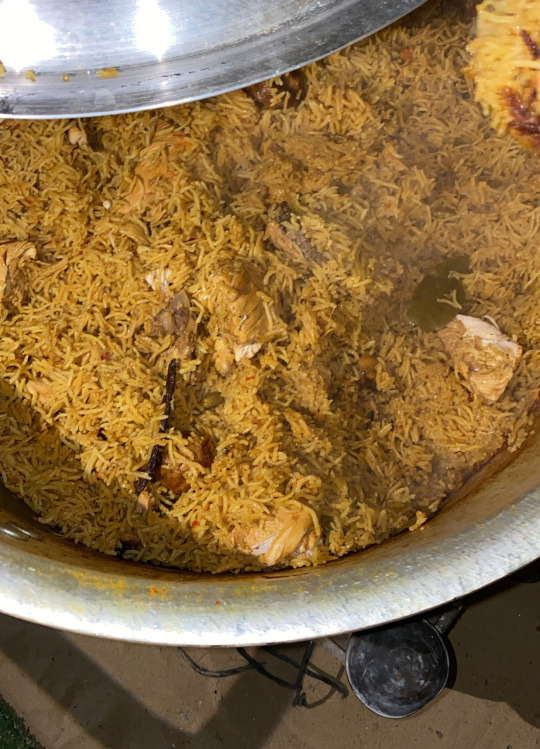
It’s also always good to be in the desert, clear your mind and be present - away from the noisiness of everything. Take a second to be mindful of the life you have lived, how blessed you are, and how your mental health and inner peace is most important above all things combined.
I usually write about new year resolutions this time of year, but today I wanted to do it differently. Today I want to be an enabler in your life, for being go-getters. So here goes:
Since we are starting a new year, and it’s only still February, I’d like you to do something for yourselves; and that is to put one goal you really really want to achieve, it could be anything - write it down somewhere, and let this be the goal you wake up to every morning, and make it happen before years end.
I really hope that you do it. Because you will get to the goal you have set if you put your mind to it.
So until next time, Fajrawis! Enjoy the weather, laugh a lot, pray more, eat better, and check out the hiking trails around Fujairah!
Sindiya, The Sign.
7 notes
·
View notes
Text
Top 5 Job Destinations in the UAE to Find Your Dream Job!
We all look for employment destinations that can lead to our dream jobs, regardless of how experienced or new to the job search process we are.

Job search in UAE
Job seekers have some appealing possibilities in the Middle East. One such prosperous region of the world that is seen as a major contributor to and advocate of global trade is the United Arab Emirates. Some of its cities, including Abu Dhabi and Dubai, have experienced tremendous economic growth and infrastructure developments. The UAE is the center of professional prospects in a variety of professions, according to multiple surveys. It is a desirable location for ex-pat job seekers for a variety of reasons, including tax-free income, a higher standard of life, educational opportunities, entertainment possibilities, and much more!
Here are the best 5 places to find a job in the UAE, despite the fact that there are seven emirates in total. But you have to get an emirates visa for Nigeria citizens.
1. Dubai
There is seldom a better alternative than Dubai if you wish to investigate the international job market. Dubai has become a significant hub of trade and business in addition to being renowned as an incredible tourism destination. Despite being mostly dependent on the oil industry in the past, its economy has successfully expanded to include other important industries including real estate, tourism, and financial services. Due to its generally high quality of living, Dubai is one of the most favored cities in the world.
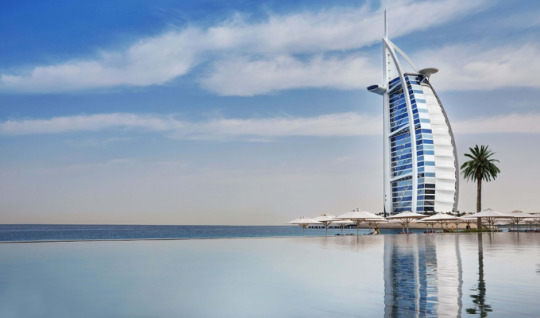
Different industries offer a variety of employment options, from entry-level to executive jobs. The city also provides chances for prosperous business launches. The next mega event, Dubai World Expo 2020, is anticipated to greatly enhance work possibilities in Dubai. Over 275,000 employees will be generated by the event in the MENA area. Dubai is a terrific place to experience a lavish lifestyle in addition to job opportunities.
2. Abu Dhabi
One of the major emirates in the UAE, Abu Dhabi is ranked as the finest city in the Middle East for living and working. It is a well-known economic hub in the UAE due to its great economic situation, quality of life, culture, and climate. There are plenty of profitable positions available for job seekers. Additionally, it is well-regarded for offering the best medical and health facilities, making it the ideal location for ex-pats to live and work.

Employers and reputable businesses in Abu Dhabi always want to hire skilled and experienced people, giving them the best opportunity to find a lucrative career. The combination of sociocultural, economic, and environmental factors makes Abu Dhabi an excellent area to begin your career hunt.
3. Sharjah
Another desirable destination in the area that merits your consideration is Sharjah, the third-largest city in the United Arab Emirates. Sharjah is well known for being a center for business startups and providing fantastic employment prospects. Numerous other aspects, such as accessible housing and lodging options, place the tranquil setting high on the list. People's experiences are enhanced by the well-known historical monuments and the breathtaking scenery of the mountains and deserts.
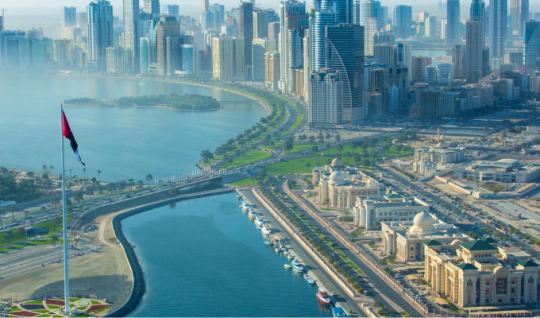
The bulk of occupations are found in the public sector, in institutions and departments of government, however, some private businesses also offer a range of positions. For students, the city boasts the best educational facilities. The Sharjah Light Festival, the F1 Powerboat Nations Cup & Festival March Khorfakkan, the Al Majaz Waterfront, and the F1 Powerboat Race & Sharjah Water Festival are just a few of the annual events that take place in Sharjah.
4. Ajman
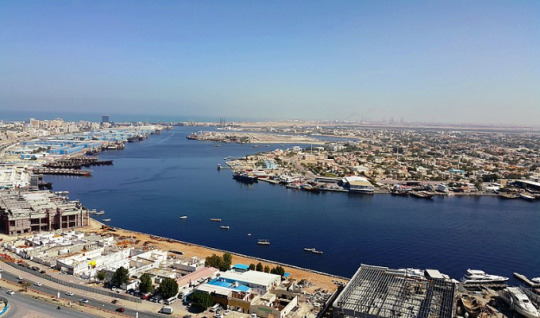
Ajman is included on the list of top emirates visa for Nigeria passport holders UAE travel destinations despite not being as fantastic as the aforementioned cities. The city, which is situated along the Persian Gulf, is home to more than 50 local and foreign retail stores, businesses, and commercial markets. People who want to work in the tourism industry have a variety of job opportunities. Additionally, reputable universities and schools in Ajman provide higher-paying opportunities for teachers.
5. Fujairah.
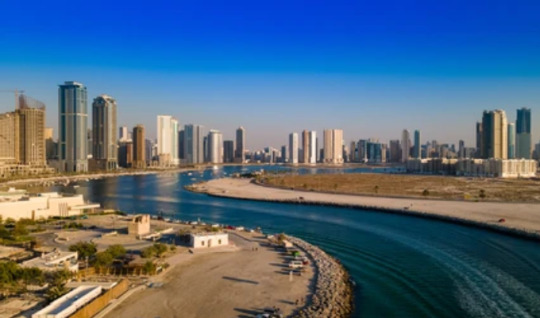
Especially for jobs in shipping-related fields, Fujairah, which is known for its natural beauty, consistently piques the interest of job seekers looking for employment overseas. The two main industries in Fujairah have been agriculture and fishing. With numerous businesses having established offices there, the port of Fujairah has grown to become one of the most well-known sports in the entire globe. With a rise in industries, it is a fantastic location for ex-pats. The city's economy currently relies heavily on sectors related to building. The neighborhood Free Trade Zone is contributing to Fujairah's economic growth. The best medical treatment and educational resources are available for people working in various occupations. To get a job in the UAE one needs to apply emirates visa for Nigerian nationals.
#emirates visa for Nigeria citizens#apply emirates visa for Nigeria nationals#emirates visa for Nigeria passport holders#emirates visa uk#emirates e visa#emirates visa online#emirates visa application
0 notes
Text
Places to Visit in Khorfakkan UAE- Best Port, Beach, Waterfall, Resort, etc...
Places to Visit in Khorfakkan UAE- Best Port, Beach, Waterfall, Resort, etc…
Khorfakkan is a small city in Sharjah. It is a little gem on the sea and is known for its fertile land, the only natural deep seaport, and the very famous Hajar Mountains. Khorfakkan is well-known for its fishing industry and the delicious seafood dishes served here are one of the best in the region. The city also has an important port that connects it with many countries such as India,…

View On WordPress
0 notes
Text
Beach Day in the United Arab Emirates
The emirate is home to some excellent seashores, which are among occupants' preferred free places to visit in Sharjah. Al Khan Beach, Mamzar Beach and Sharjah Open Beach are the absolute best spots for sun and ocean in the emirate. While you're here, you can construct sandcastles, take a plunge in the ocean or even play a round of volleyball with friends and family members! These seashores are likewise equipped with jogging tracks and outdoor gym equipment for those who want to get in some exercise.
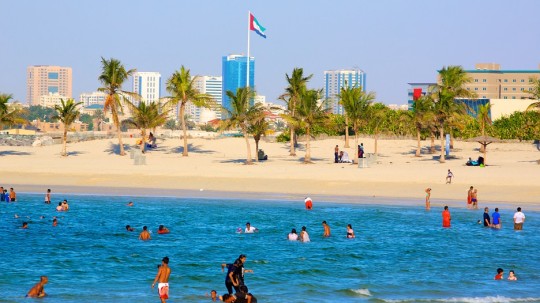
In case you're up for an excursion, Khorfakkan Beach is a picturesque spot for inhabitants to visit, with perspectives on the ocean and the radiant Hajar Mountains. There are play areas for youngsters to appreciate, just as parks and gardens close by for visitors to relax and BBQ, for those searching for the sake of entertainment activities in Sharjah for nothing. This sandy piece of the seashore is likewise fixed with eateries when you get eager! one of the touring places in Sharjah that are 90 minutes from Dubai.
Sharjah and Dubai beaches are very beautiful and remain crowded because many travelers visit them every day. People from all over the world want to visit the United Arab Emirates especially Dubai and Sharjah because these places have many tourist attractions. People can visit them by taking 30 Days Dubai Visa Price and 90 Days Dubai Visa Price from DesertDreamTourism Travel Agency which is the oldest and best agency in UAE for tourism and trips.
0 notes
Text
We Need to Talk about the Modernism Fetish in the Gulf
fet·ish. ˈfediSH/: “… an object of irrational reverence or obsessive devotion”
Prologue
An assortment of headlines in UAE based, English language publications lamenting the loss of ‘historical structures’ and ‘icons.’
“Original Hard Rock Cafe in Dubai demolished after 15 years.” (built in 1998) “A Facebook campaign called Save the Hard Rock Cafe attracted about 6,000 supporters.” -- The National. January 28, 2013
“Dubai television tower demolished: The aging Jumeirah television tower was demolished on Friday, bringing an end to one of Dubai's iconic structures.” (Built in 1986) -- Gulf News, June 28, 2008
“End of the road for Dubai's Metropolitan hotel. Metropolitan hotel, one of Dubai's oldest hotels, is to be demolished next year.” (Built in 1978) -- The National. November 29, 2011
“Dubai's Metropolitan Hotel demolition: Heartache for people who made the job their life. The Metropolitan Hotel, which is due to be demolished, was like a family for many who worked there.” -- The National & Gulf News. March 8, 2012
“Dubai’s landmark ‘Sana Building’ to be pulled down. 35-storey twin tower to replace the iconic building in Dubai's Karama area.” (built around 1987) -- Gulf News. January 11, 2017
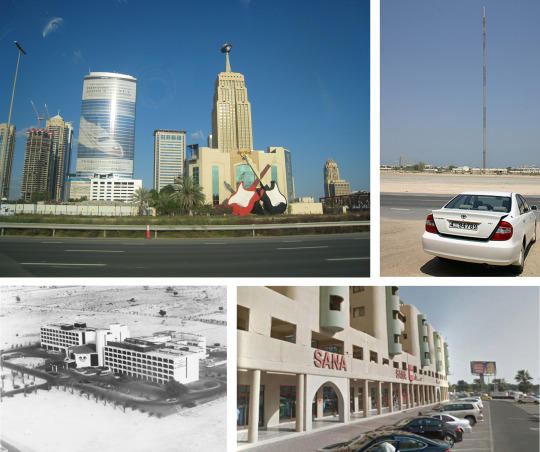
Figure 1. Clockwise from top left: Hard Rock Cafe; Jumeirah Antenna; Sana Building; Metropolitan Hotel
In 2014 at a fully packed NYU-AD auditorium I was participating in a panel put together by the publisher of the Abu Dhabi Architectural Guide.[1] A compendium of modernist buildings (anything built after 1966, more or less) its stated aim was a documentation of the city’s architectural heritage thus disputing the claim that Abu Dhabi has ‘no history.’ In my opening remarks I cautioned against the fetishization of buildings, i.e. the notion that one can become enamored with a structure, simply because it was built in the ‘past’ (the word past here needs to be taken with a great deal of caution) and thus elevate it to the status of sainthood. As an example I mentioned the Abu Dhabi Bus Terminal which opened in 1989 and was designed by a Bulgarian architectural outfit. It has acquired in the minds of the modernist brigade a kind of respect and reverence usually associated with Gothic cathedrals. To my mind it is not a particularly interesting building. Known mostly for its quirkily curved concrete canopy extending over the bus stops, and painted in a garish green color, it stands in opposition to its surroundings, visually speaking.
Talking about surroundings, the structure makes no gesture whatsoever towards the city in which it is located. The bus station is surrounded by a fence and is set back from the street and can thus be seen only from a distance. Surrounding open spaces are occupied by workers on many evenings imbuing it with a sense of informality largely absent from the city, and also suggesting the potential for such a building in attracting a larger segment of the population and becoming a vibrant social hub. Given all that, I argued that it is probably best if the building is demolished and a more appropriate replacement takes its place. A kind of porous urban structure as seen in many other parts of the world.
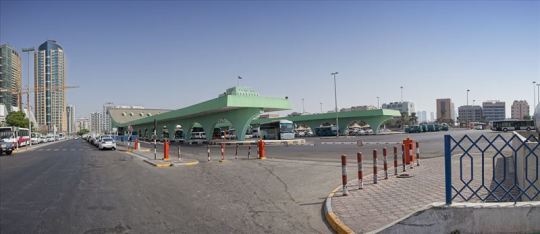
Figure 2. The Abu Dhabi Bus Terminal set back from the street. Source.
Having made that statement you could literally hear an inaudible gasp from the audience. It seems that I had defiled the holy grail of Abu Dhabi architectural modernity. It pretty much went downhill from there. Angry denunciations followed informing me about the building’s synthesis of both the Frank Lloyd Wright Guggenheim Museum in New York City and the Eero Saarinen Washington, DC airport terminal (why is that a good thing?); others pointed out that such views (mine) are reflective of a kind of drive-by mentality which does not understand the inherent beauty of the building (which was kind of my point, its remoteness and distance); or that Abu Dhabi is losing so much of its history that we need to preserve whatever is left (even if it is functionally inefficient, or lacks any connectivity to the city). A particularly irate audience member went off on a tangent and denounced modernism as a category (because I had mentioned in passing that modernism had admirable social goals); others (actually only one, in a face-to-face conversation after the event) praised my bravery for refusing to turn the city into some sort of fossilized version of itself (however hard that maybe in the case of Abu Dhabi). It seemed that I had touched a raw nerve – and in an attempt to placate an increasingly angry mob I noted that my comments were made partly in jest to make a larger point about modernism.
youtube
Video of the Event. Standard Disclaimer: Actual events may not correspond directly with my own hazy recollections.
What this episode illustrates though is that in the Gulf, and indeed throughout the world, modernism is making a strong comeback. In recent years there have been many initiatives and exhibitions that celebrated modernist ‘achievements.’ For instance the theme of the UAE National Pavilion at the 2014 Venice Architecture Biennale, was ‘Lest we Forget’ a nostalgia tinged celebration of the countries’ architecture, largely focused on what was produced in the 60s and 70s. A hit-parade of favorite buildings, masterplans and amusing anecdotes about the countries’ founders thus sustaining some sort of founding myth. Other efforts followed, such as the documentation of Sharjah’s modernist heritage. Accordingly, anything built in that golden age of modernism and has a slightly worn out look with curiously looking concrete apparitions is declared as a worthy masterpiece. I have been complacent in this as well, introducing the UAE Modern initiative in 2012, an educational project whose aim was to map modern architecture in the UAE. It had its share of trophy buildings – the World Trade Center, the Hilton Hotel in Al Ain – although in my defense students also examined other, less spectacular structures such as the New Calicut Hotel in Khorfakkan, the Breeze Motel in Kalba, gas stations, health centers and schools. None are particularly remarkable and may not be worthy of a second look by hardcore modernist aficionados. Yet they are a significant component of an Emirati Vernacular – an architecture that is derived and inspired by its users and inhabitants – rather than a top down version of an expatriate architect’s fantasy about what constitutes Emirati identity.
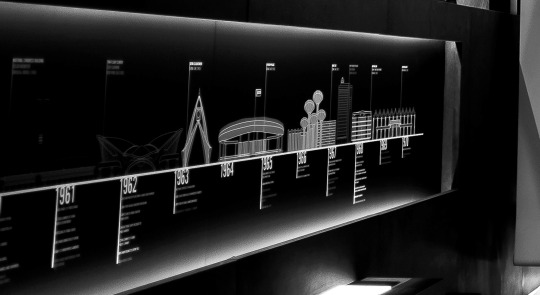
Figure 3. Timeline of remarkable buildings in the UAE. As shown in the UAE Pavilion at the 2014 Venice Architecture Biennale. (Source: Author)
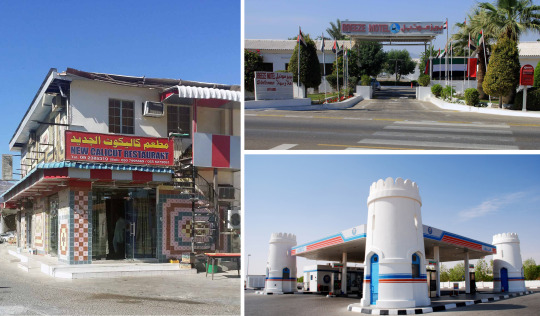
Figure 4. Less remarkable buildings in the UAE. Clockwise from left: Calicut Hotel; Breeze Motel; a Gas Station. Source: UAE Modern
Such interest in glorifying and valorizing various modernisms is to some extent inspired by what is happening throughout the Arab World. For example, a center in Beirut that wants to be a repository of modern Arab architecture; in Cairo an architectural observatory outfit is engaged in a kind of navel-gazing of the city’s ‘golden architectural age’ – whatever that is. Numerous Facebook pages look at life in the ‘good old days.’ Some of those have found their way into a Gulf based architectural discourse. For instance the Bahrain Pavilion at the 2014 Venice Architectural Biennale is a homage of sorts to Arab Modernism designed and curated by folks from Beirut. This does of course raise the issue of context (and history). Clearly though no one can dispute the value of documentation, mapping and archiving but if they are not situated in a larger critical discourse can easily become tools for a more sinister agenda that seeks to dismantle the old and usher in a neo-liberal urbanity that furthers inequality, increases alienation and promotes a sense of transience and temporariness. By focusing on a few token buildings and structures, claiming that they are part of the nation’s ‘heritage’ and incurring a protective status on them, more serious damage is done to buildings that are more valuable socially and culturally.
There are countless examples for this. Consider the Central Market in Abu Dhabi. While modernist in appearance it transformed into an informal affair, bringing together a diverse group of residents. Or the Mulla building in Electra Street, Abu Dhabi. An unremarkable building from the 1980s, it was a gathering area for the city’s marginalized South Asian population containing an arcade that was a piece of South Asia in the middle of an Arab Gulf city. Both are not known for their outstanding or quirky architectural qualities but for their performative social roles. Both were demolished recently to be replaced with high-end developments that cater to the rich and privileged, furthering inequality and an overall sense of transience. But all this is good though because we have listed the bus stop as a modernist icon, so we are off the hook, in a manner of speaking.
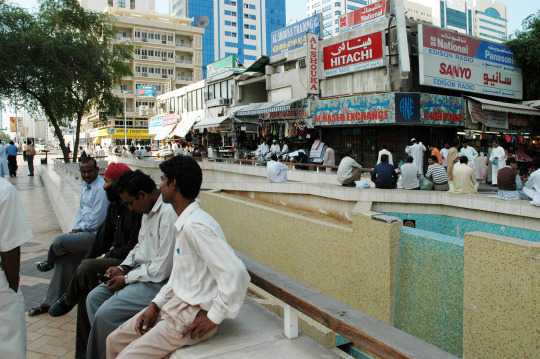
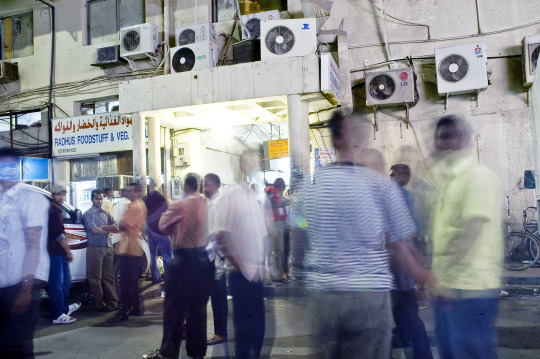
Figure 5 & 6: The Abu Dhabi Central Market in 2004; and the Mulla Building 2008. Source: Author
The case of the UAE Sha’bī (or National house) is of particular relevance. It was the theme of the UAE Pavilion at the 2016 iteration of the Venice Architecture Biennale, which I curated. From the outset I sought to distance the exhibition from a nostalgia inspired presentation about the ‘good old days’ to one that highlights contemporary transformations. My focus was on how residents transformed their ‘modernist’ homes to make them compatible with their lifestyles and habits. It is not a glamorous architectural form or one that would attract the pages of glossy magazines yet it achieves a quality that is indigenous since it is a direct outcome of residents needs. It thus stands in defiance to the top down version of modernism. An architecture without architects – a true expression of a societies culture. This particular building type has received the attention of heritage conservationists but has as of yet to receive any sort of official recognition as a significant element in the nation’s built heritage. More significantly countless Sha’bī neighborhoods are left to decay and crumble, acquiring a slum-like status, a place to be shunned and filled with undesirables.
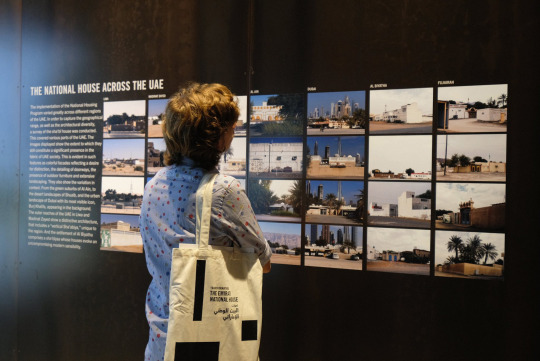
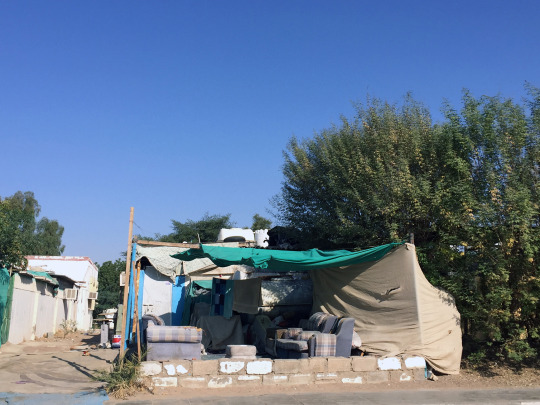
Figure 7: The UAE Sha’bi house across the nation; displayed during the 2016 Venice Architecture Biennale at the UAE National Pavilion. Figure 8: A deteriorating Sha’biyya neighborhood in Al-Ain. Source: Author
Things are not as dire as these examples may indicate however. In fact there are some success stories such as the preservation of the modernist Abu Dhabi Cultural Foundation. [2] Aesthetic qualities aside that building’s main value derived from being a social hub for the city’s residents (Emirati and expatriate alike) who banded together to save it from demolition. Moreover the building is not simply an object to be acquired like a luxurious car but it performed a significant role in the life of the city and was open to its streets with various passages linking it to the city.
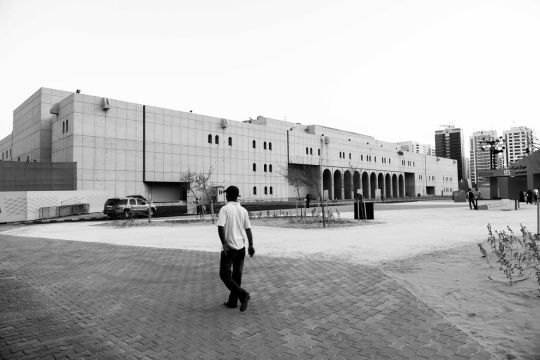
Figure 9: The Abu Dhabi Cultural Foundation. A structure that is connected to the city. Source: Author.
At some level such an interest in modernism is quite curious. After all during the 1970s and 80s modern architecture was strongly maligned. All sorts of social ills were ascribed to this particular brand of architecture. Its monotony and simple forms were associated with a mind-numbing sameness and alienation among city dwellers. The abolition of walkable streets and communal spaces in favor of efficient highways was correlated will all sorts of urban problems such as crime. Writers, scholars and acitivist bent over backward decrying the evil that is modern architecture: Tom Wolfe in “From Bauhaus to Our House,” Robert Venturi’s “Learning from Las Vegas’ and of course the holy grail of anti-modernist city planning Jane Jacobs’ “Death and Life of Great American Cities.” At some point though over the last few years a shift happened. Worldwide there has been a resurgent interest in all things modern – architecture and otherwise. Mid-century modern became a style to be admired – furniture from that period acquired, adapted and placed in contemporary homes. Media joined the bandwagon – TV shows looking at the 1960s period highlighted its streamlined aesthetic and bright colors in shows such as “Mad Men” in which protagonists are seen wearing sleek suits, driving Cadillacs and entertaining in open air floorplans contained in Miesian skyscrapers. The 1950s and 60s were cool again.
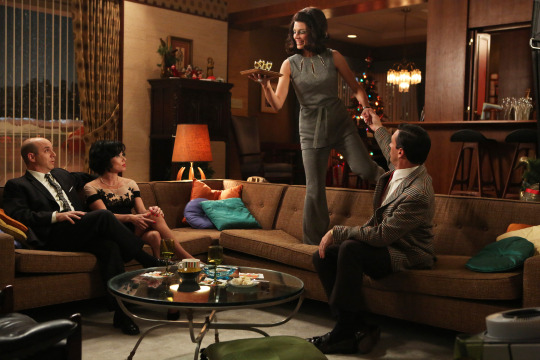
Figure 10: Don Draper’s 1960 living room in ‘Mad Men.’ Mid-centruy modernist nostalgia. Source.
At an architectural level Brutalism in particular, with its aesthetically pleasing, overtly expressive concrete forms, captured the attention of many architecture aficionados. Websites such as “fuckyeahbrutalism” are filled with countless examples of buildings following this style popularized in the 1960s. Subject to demolition and replacement, efforts are made for preservation, although as some critics have pointed out the revival is a form of commodification that stands in opposition to the movement’s original progressive social agenda. [3] Yet aside from speculative motifs are there other explanations for looking to the past? Postmodern theorist Andreas Huyssen notes that there has been an “explosion of memory discourses at the end of the twentieth century.” [4] Others evoked the notion of an “invention of tradition,” a psychological device through which some aspects of the past are rejected to “validate the new, but sometimes also the retention of the past as ‘other’ as a continuing proof of the superiority of the new.” [5] Thus, a deep dissatisfaction with the present prompts a kind of collective effort to reminisce about the past.
How does the Arab Gulf fit in all of this? How can one explain the obsessive interest by some in preserving and mapping all things ‘modern.’ Is it simply a matter of copying what happens elsewhere in the region and the world? Or are there other factors at work? For longtime residents in the transient cities of the Gulf, evoking such nostalgic recollections may act as a form of resistance to obsolescence and disappearance. A counter narrative to temporariness. For Emiratis it may well be an attempt at creating an architectural heritage, a tradition of building that shows their society as equal to places elsewhere. This is irrespective of the fact that all of these ‘modernist buildings’ were built and designed by foreign architects. And they do not constitute a form of colonial architecture blending indigenous building traditions with modernist influences given the historical context of the region.
Rashad Bukhash, former head of conservation at Dubai Municipality and former member of the UAE Federal National Council is a champion of preserving the UAE’s architectural heritage. In a debate at the council he was questioned by a colleague about whether “there was an Emirati architectural style.” I have personally witnessed participants in workshops debating the very existence of an indigenous built heritage and the meaning of an “Emirati Identity.” Recently an Emirati commentator noted:
Our culture isn’t to be seen in buildings or items of art. We didn’t have museums, opera houses, government buildings or palaces. Our culture is to be found in our oral traditions, values, language, poetry and the history that has been handed down from generation to generation.
This notion of associating one’s culture with the expectations of others is problematic. Another Emirati commentator questions the need for utilizing foreign architects in designing such significant structures as the monument for fallen UAE soldiers in a CNN Arabic piece titled: “Why is it better to design the National Commemorative Monument by a Khaliji designer” (as opposed to the British national who was selected). These are important questions and a debate needs to take place about such matters. The Gulf has its own unique qualities and cultural traditions. An architecture will ultimately emerge that will reflect this – but for that to happen tools need to be provided, and a framework created, which would allow for a free expression of lifestyle, needs and activities (e.g.: proper architecture schools that are not western imports headed by outsiders; architectural societies that promote and engage in critical debates; an examination and celebration of an Emirati vernacular architectural tradition). Such a discourse is more meaningful, more sustainable and more relevant than simply enumerating and listing modernist imports that may or not be useful but that are not from this land. It is time to look to the future rather than the past and to empower Emiratis with the tools needed to participate in the production of their own built environment.
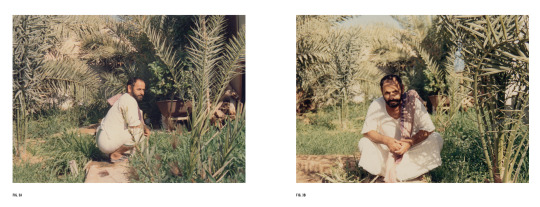
Figure 10: Head of the Meqbali household nurturing the garden of his Sha’bī house in the 1980s. When architecture fades and a house is transformed into a home. Source: NPUAE
Notes
[1] Menoret, Pascal (ed.). The Abu Dhabi Architectural Guide. Abu Dhabi: NYU-AD, FIND
[2] Designed by Iraqi architect Hisham Ashkouri, who was part of TAC (The Architects Collaborative) a Cambridge based firm founded by modernist icon Walter Gropius.
[3] Catherine Slessor (2017). “Brutalism is back – but its fetishisation comes at a cost”
https://www.royalacademy.org.uk/article/opinion-architecture-brutalism-and-the-future-of-housing
[4] Huyssen, Andreas. Present Pasts : Urban Palimpsests and the Politics of Memory, Cultural Memory in the Present. Stanford, Calif.: Stanford University Press, 2003.
[5] Dennis, Richard. Cities in Modernity : Representations and Productions of Metropolitan Space, 1840-1930, Cambridge Studies in Historical Geography. Cambridge ; New York, NY: Cambridge University Press, 2008.
1 note
·
View note
Text
UAE Tour Guide via /r/dubai
UAE Tour Guide
Below is a list of outdoor locations in UAE. I've tried to add guides for each location as far as possible.
Abu Dhabi:
Sila beach : Quiet beach on the road to Qatar. Since the border is closed, you will find less number of heavy vehicles on the road. Clear water and nice camping spot.
Dalma island: A smaller island closer to baniyas island. It isnt as developed as Baniyas island. This will help you get there. Here's a small guide to the place and here's a report on Dalma island.
Sir Baniyas Island - This is a popular destination. It has a wildlife park and host of other activities. Anantara Hotels & Resorts has 3 different properties. You will need a booking with them. They also have day trips.
Shuweihat Island - A barren uninhabited island with some beautiful terrain. This and here's a video of the same.
Al Maya Island : A secluded island closer to Abu Dhabi city. You will need a booking with the resort. Here's a guide to it.
Al Khazna - Perfect for camping and astrophotography.
Liwa - Very far off from the city but definitely worth it. Tallest sand dune Tal Moreeb is in the same area. Here's a guide to it.
Al Ain:
Jebel Hafeet: The drive up to the top is great. Has plenty of facilities for barbecuing. Very crowded on holidays and weekends. You need to reach early to get a good spot and beat the traffic. 2 lanes going up, 1 lane coming down.
Mubazzarah park and dam - Located just before the hike towards Jebel Hafeet. Famous for its hot springs.
Al Ain Oasis - Report
Dubai -
Al Qudra lakes - Man made lakes outside the city. There's a cycling track close to it. And few food trucks before you head inside.
Lahbab - A good spot for camping. The area is used as a base camp by tour companies organising desert safaris.
Hatta Dam: Hatta kayak offers boating and kayaking facilities. Also visit Hatta Green lake
The Hatta MTB Centre provides mountain biking facilities and comprises of more than 50km of trails and is constantly growing. There are 4 trails depending on your expertise.
Guide to all the activities available at Hatta.
Note: Hatta pools is on the other side of the border in Oman.
Sharjah :
Fossil Rock - Officially called Jebel Maliha, this large outcrop gets its common name from the prehistoric marine fossils found on its slopes. Good spot for dune bashing provided you have a 4x4. Next to it is the Maliha archaelogical centre.
Khorfakkan beach - jet skiing, paragliding.
Ras Al Khaimah:
Jebel Jais : Tallest mountain in the UAE. They've added BBQ spots and parking facilities at various points during the hike to the top. Also, a zip line has been introduced.
Wadi Naqab
Shawka Dam & Shawka Pools
Buraq Dam
Jazirat al Hamra - Abandoned village with a lot of old houses and structures. If you into photography, definitly visit during the daytime. Here's a guide to it.
Wadi Bih - A brief guide to it. A trail run is organised every year at this place.
Wadi Shaam - Guide
Staircase to heaven - A popular trekking route which caan be a bit tricky. Here's a guide and some pictures
Copper Hike - Guide
Sal mountains - Guide
Wadi Asimah - Guide
Wadi Ghail - Video
Al Qasimi Palace - This is an abandoned palace. Guide
Khatt hot springs - Link
Fujairah :
Jebel Yibir
Wadi Wurayah - Presently closed as its being renovated.
Al Aqah Beach - Great spot for camping.
Snoopy island - Diving, snorkeling and camping
Wadi Shis - Video
Wadi Siji - Image
Umm Al Quwain:
Abandoned plane - Report
Ajman:
Public beach
If you like long drives, the following is a good option -
Dubai > Dhaid > Masafi> Dibba > Khor Fakkan > Fujairah > Kalba > Dubai
The Masafi - Dibba road is one of the best roads to drive on thanks to the views on either side. Make sure you drive here during daytime. Also, while returning from Kalba, take E102. This passes through 2 tunnels and the mountains. The views are awesome.
Submitted November 29, 2017 at 05:23AM by Muhaisnah4 via reddit http://ift.tt/AHXju1
0 notes
Photo

The famous @hotel_holiday_international #cake with #turkishcoffe medium as Mr Nasser introduced me to last year - at @caffeundici this time. I highly recommend @visitsharjah for the most memorable holiday and of course Hotel Holiday Int or @marbella_resort in the city or Oceanic #khorfakkan on the east coast. Best place for a holiday and safe, friendly and hospitable people always putting tourists first. Even as a woman it's been brilliant and no need for headscarves or anything! #travelgrams #instatravelling #travelbloggers #travelinspiration http://ift.tt/2liyiCk
0 notes
Text
youtube
#travel vlog#Ugly And Traveling#Khorfakkan#Khorfakkan Sharjah#khorfakkan tourist place#khorfakkan waterfall#khorfakkan beach#khorfakkan city#khorfakkan tunnel road#khorfakkan beach fujairah#khorfakkan fujairah uae#khorfakkan adventures#khorfakkan best places#best places to visit in khorfakkan#khorfakkan corniche#khorfakkan day trip#things to do in khorfakkan#khorfakkan fujairah#travel guide#Khor Fakkan#Shees Park#shees park khorfakkan#khorfakkan tunnel#ugly and traveling#travel#uglyandtraveling#ugly & traveling#travel around the world#travel blogger#travel channel
0 notes
Text
#Al Rabi Hiking#al rabi mountain khorfakkan#Al Rafisah Dam#Al Suhub Rest Area#al suhub rest area khorfakkan#al suhub rest house khorfakkan#amphitheatre khorfakkan#attractions in khorfakkan#bbq spots in khorfakkan#best places to visit in khorfakkan#cafe in khorfakkan#cloud lounge khorfakkan#dubai to khorfakkan#fujairah khorfakkan#heart beach khorfakkan#Hisn Khorfakkan Museum#History of Khorfakkan#how far is khorfakkan from dubai#Importance of Khorfakkan for Sharjah#khor al fakkan#khor fakkan city#Khor fakkan heart beach#khor fakkan mountains#Khor Fakkan Secret beach#khor fakkan sharjah#khor fakkan things to do#khorfakkan amphitheatre#khorfakkan attractions#khorfakkan beach#khorfakkan beach activities
0 notes